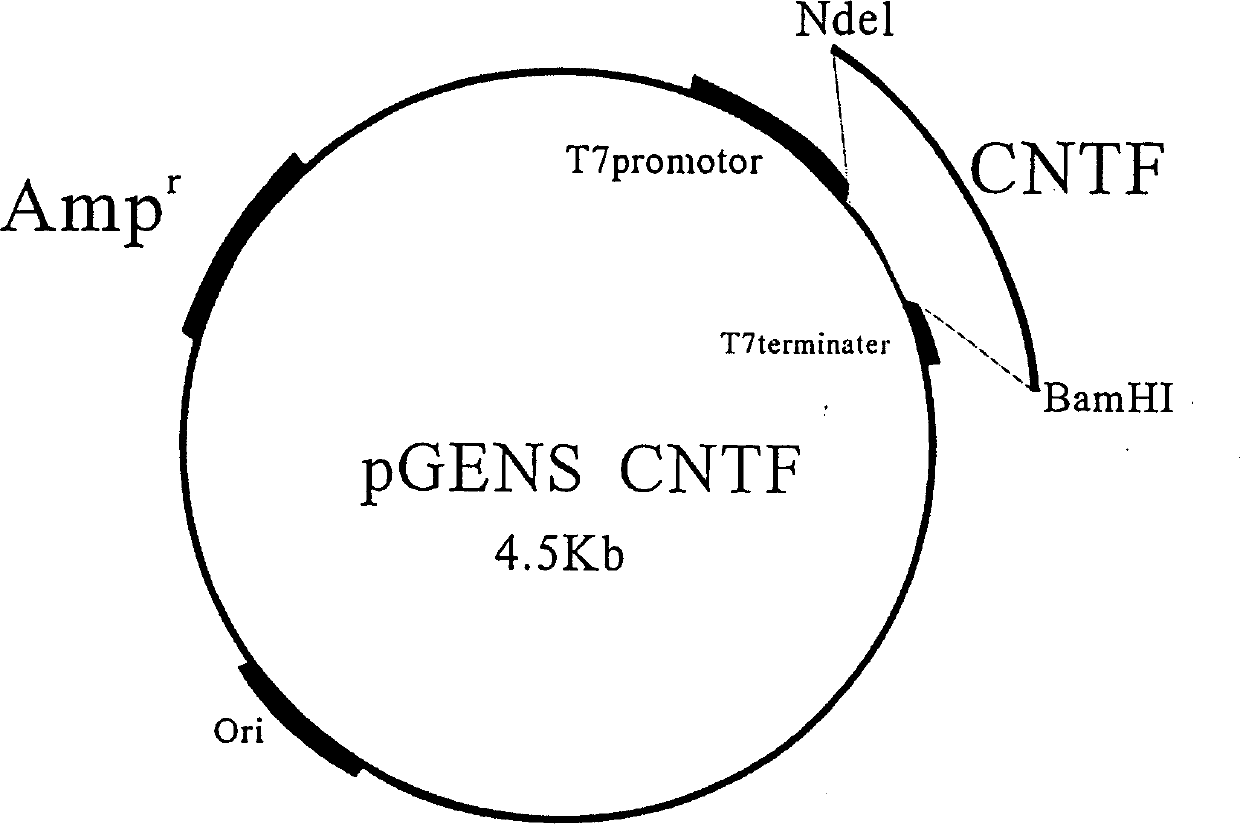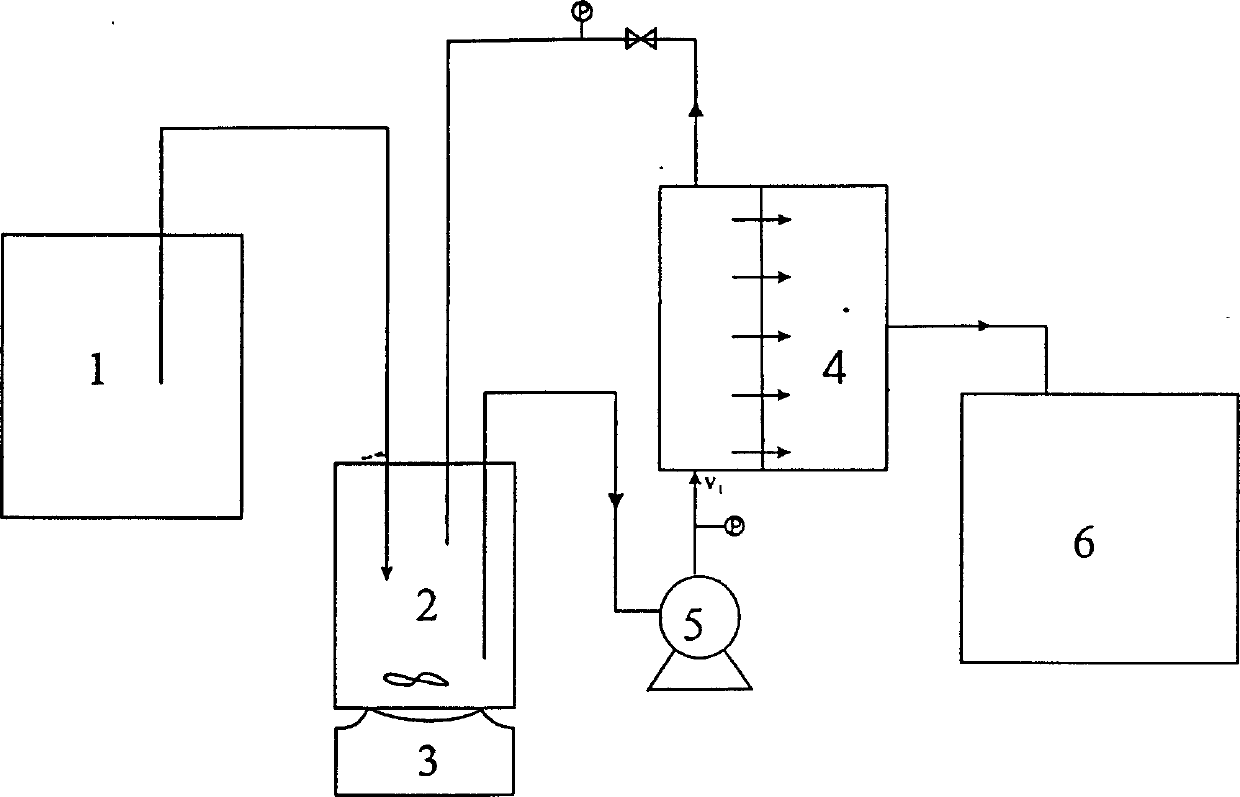Production process of neurotrophic factor
A technology of neurotrophic factors and production methods, which is applied in the field of genetic engineering, can solve problems such as not being suitable for large-scale preparation, and achieve the effects of shortening renaturation time and reducing polarization phenomena
- Summary
- Abstract
- Description
- Claims
- Application Information
AI Technical Summary
Problems solved by technology
Method used
Image
Examples
Embodiment
[0020] Construction of CNTF engineering bacteria
[0021] Synthesized and cloned on the T-vector by Gene Synthesis Company and verified by sequencing, purified and recovered, digested with NdeI, BamHI and then purified and recovered; pGENS plasmid was also digested with NdeI, BamHI and XhoI, and the large fragment was recovered; The recovered CNTF gene fragment and the large vector fragment were ligated in vitro to form the recombinant plasmid pGENS CNTF, as shown in FIG. 2 . The recombinant plasmid was transformed into the Escherichia coli recipient strain BL21(DE3)pLYSS, and a transformant with a completely correct structure was screened through the verification process of enzyme digestion, PCR, and DNA sequencing. After shake flask expression screening, it was determined that pGENS CNTF2 was the original engineering bacterium for production.
[0022]The pGENS CNTF plasmid is an expression plasmid constructed by our company, including the following components: ColEl replico...
PUM
 Login to View More
Login to View More Abstract
Description
Claims
Application Information
 Login to View More
Login to View More - R&D
- Intellectual Property
- Life Sciences
- Materials
- Tech Scout
- Unparalleled Data Quality
- Higher Quality Content
- 60% Fewer Hallucinations
Browse by: Latest US Patents, China's latest patents, Technical Efficacy Thesaurus, Application Domain, Technology Topic, Popular Technical Reports.
© 2025 PatSnap. All rights reserved.Legal|Privacy policy|Modern Slavery Act Transparency Statement|Sitemap|About US| Contact US: help@patsnap.com



